
You are reading the older HTML site
Positive Feedback ISSUE
march/april 2008
bluenote audio
Demidoff Signature integrated amplifier
as reviewed by Marshall Nack
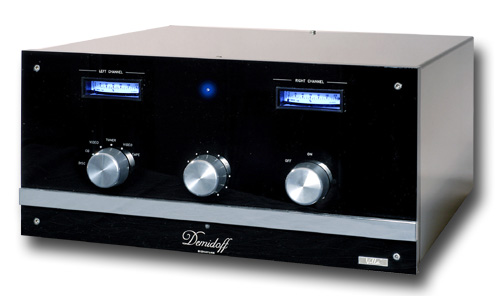
|
"Hey, I hear you have in a new integrated amp?"
"Yup. It's solid-state, 50 watts per channel."
"50 watt solid-state? Who needs that?"
Fair enough question. Today's consumer landscape is peppered with solid-state amps capable of unleashing hundreds of watts. Why bother with a mighty-mite providing only 50?
Now, this is a sound I haven't heard the likes of in awhile. On first listen, it was clear the Demidoff has exceptional tone. Smooth and warm, big and ripe (careful it doesn't go to fat), it conjures up the record label of its namesake—the fabled Blue Note LPs of the fifties and sixties.
Its second strong suit is robust dynamics. These have uncommon force and weight and are easily stimulated. As far as I'm concerned, you provide these two attributes and you're well on your way.
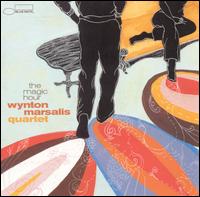
Let's play the magic hour, with the Wynton Marsalis quartet (Blue Note 5979032). Say what you will about the man, you can't deny that he's a terrific arranger. Track one is the perfect diet for the Demidoff. A stick-to-your-ribs double bass intro down center is followed by the thwack of the drums on the extreme left front. When the bass drum is kicked, you'll know it, and won't mistake it for the upright bass, because it goes lower with more snap. Then the badly recorded Steinway enters way off on the right, and finally, there's the sensuous voice of Dianne Reeves, up front and center. What could be better? Only Wynton's muted trumpet, seconding her vocal line a minute later. The musicians take turns, one soloist in the spotlight at a time. The Demidoff is in its element.
I hasten to point out the superior quality of the Demidoff's note production. Its tonal and timbral colors add zest to a flowing and totally ingratiating musical line. I just came off a review of the ASR Emitter I integrated amp, a pacesetter at $17,800. Among its many attractions were a few borrowed from the valve community. The Demidoff similarly belies its solid-state topology, nudging even further into filament turf. When it comes to tone, the Demidoff is on par—it need make no excuses to the pacesetter.
Dynamics
So, what about those 50 watts?
In terms of dynamics, however, expectations did have to be adjusted. When Dianne really belts it out, the dynamic ramp-up doesn't stay with her and halts before she's done with the phrase. This isn't accompanied by breakup or distortion, or even soft clipping—it just stops expanding and flattens out. You can hear the effort she's putting out, but the sound is not getting louder. The wide-open dynamic expansion I'm used to hearing is missing.
I didn't feel this was a matter of incompatibility between the amp and speaker. The Demidoff seemed happy with the Kharma CRM 3.2.2 speakers (review coming next month). The CRM 3.2.2 speaker, a nominal 6-ohm load not dipping below 4, with 90 dB sensitivity, is a relatively easy burden. This pairing produced highly satisfying dynamics with smooth and stepless gradations and responded sensitively to changes in the signal everywhere else. But perhaps something with higher sensitivity would work better—would the crescendo swell to completion with a 92 dB efficient speaker?
My guess is the Demidoff is performing to spec. After all, I'm comparing the Demidoff's dynamic range to that of the mega watt, mega $$$, amps I've gotten used to. For $6900, you can't build-in that kind of dynamic range. At any rate, cranking the volume helped to compensate. And stepping down from a TARA Zero digital cable to a TARA CCI, or even The 0.8, generated more perceived impact and dynamic thrust, if at the expense of detail and realism. We'll leave it at that.
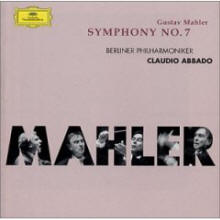
Large-scale symphonic works were a similar mixed-bag affair. On the Mahler Symphony No. 7 with Claudio Abbado and the Berlin Philharmonic (DG 289 471 623-2), the first movement gets rambunctious right away, with a big orchestra and the heavy artillery. The Demidoff carries off this first level forté rather grandly, especially the brass. Demidoff macros are not timid affairs. They have plenty of weight accompanied by fast, coherent, issue-free transients that move the beat along with fine pacing. And there's that lovely saturated and colorful tone helping to boldly communicate the drama of the score.
Through the Green Eyeshade
But I have a critical observation to make concerning those sections with complex scoring, when many instruments are playing simultaneously. Instead of clear articulation, there was foggy ambiguity. Instruments lost their integrity and became a blend. Following along as the musical line is passed around from section to section became difficult. This happens to a lesser degree even with less dense programming involving fewer instruments. The Demidoff stage is more of a holistic wash, which gets pretty crowded—the large and nebulous shapes have little space between them. Width is decent; depth is so-so. The problem is compounded because less low-level detail is available. It's all there; just don't try to isolate individual instruments.
To a certain extent this is a voicing decision. There is always a battle going on between control and openness. A lot of one often comes at the expense of the other. Many components ratchet up control to dole up more definition—and become stiff as a result. The Demidoff errs in the opposite way: it has loose control and a wonderful flowing line. This is also a matter of parts quality and expense. It seems only costly components can do both.
Frequency transitions are smooth and tube-like. The treble is really impressive, its integration outstanding—as good as the best of 'em. There are no issues here to speak of; you won't have to think twice about this band. The lower-mids through upper-bass are over-represented, accounting for the noted saturation and body. Below that, a little more firming and a sharper attack would be nice—not a big deal, though. Transient coherency is right on par with frequency integration. And timbral reproduction felt wholesome and satisfying. It avoided running to excess and the land of la-la beauty, as well it might have, given its tubey inclinations. No fix-er-up measures or tweaks needed to be applied. The Demidoff's voice is placed squarely in the sweet spot.
Single Ended Transistor
Now, back to that great tone for a bit—this doesn't come about on its own. What accounts for it? Purity? Certainly. Lack of mechanical artifact? Certainly. Smooth and grainless? Warm and sweet? Yes, yes, yes, and yes. Coloration? Ah. The Demidoff errs towards the sweet and beautiful side.
The Demidoff literature describes it as a single-ended design. I know what SET means for valves. It's usually accompanied by low intermodulation distortion, and low-order, even-order, distortions. In other words, pleasing distortions. What does it mean for solid state? I was kind of hoping it implied something similar, which would help explain the attractive tone I was hearing.
Alas, this isn't the case. The Demidoff does have pretty low Total Harmonic Distortion (0.05%), but SET for solid state stands for Single Ended Transistor, not Triode. It means that there's only one type of output device. In this circuit there are two Darlington transistors per channel. (The Darlington topology was popular in the fifties and fell out of use; it is rarely seen today.) And the Demidoff is not like other single-ended solid-state amps such as the Pass. These run in Class A and get very hot, and devastate your electric bill. Left on for 24 hours, the Demidoff is barely warm.
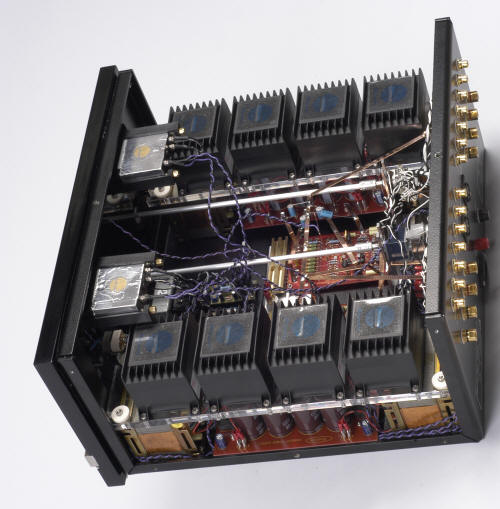
The active preamp and the two other driver stages run in Class A. The output stage runs in Class A/B.
Now, I don't know how far it runs in sweet Class A before the undesirable Class B kicks in, because the unit sounded unfailingly sweet to me. I don't think I ever heard it make that switch. But then I never got the volume past 12 o'clock, and those two power output meters on the faceplate barely ever budged. Maybe I never stressed it to the point of switching classes. Its character remained consistent.
It should also be noted that the unit is predominantly handcrafted, with a lot of point-to-point wiring. The meters, front-panel lights and motorized volume control are all on a separate supply. Power supply design plays a big role in tone quality.
Wires
Being a dual-mono integrated amp, my first choice was to plug the Demidoff into the passive TARA PM/2 power conditioner, where all amps go. In fact, this is the way to go. Power amps shouldn't run through active conditioners. The rest of the front-end gear was left to run through the TARA IDAT active conditioner on another power line. The more AC lines you use, the better.
And being a bit soft and full in the lower ranges, I also pegged the Demidoff as best served with TARA wires.
Design and Cosmetics
This is a big, black aluminum box weighing about 80 lbs. It was hand-delivered and installed by the importer, Tom Hills of Hudson Audio Imports. I left it on 24/7; the unit performed flawlessly over the review period.
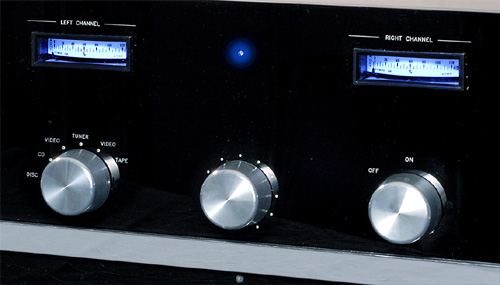
The faceplate is a ½" thick, black tinted, acrylic slab. Two McIntosh-style Vu-meters give a peek at what the amplifier is outputting and flank a light blue LED power indicator. Three large, rotating, aluminum knobs control Input Selection (six available), Volume Control, and power On-Off. There is a cute, round, metal remote that activates a motorized volume control. Other operations must be done at the front panel. The look is sixties retro.
In the back are six pairs of RCAs, plus one set of XLR inputs. One of the RCAs and the single XLR set are both marked CD. Connect either—both are both active when the front panel Input Selector is on CD. There are two sets of speaker outputs. Be advised; there is an audible pop when the Demidoff is turned on.
Conclusion
It was clear from the get-go that the Bluenote Demidoff Signature Integrated Amp has its heart and soul in the right place. Smooth and full-bodied, with a big, ripe tone (careful it doesn't go to fat), it conjures the record label of its namesake—the prized Blue Note LPs of the fifties and sixties.
No, I can't say it's straight up neutral and accurate, but I can say it's thoroughly enjoyable to listen to. Frankly, I'm surprised at how enjoyable. Just prior to this review, I had the ASR Emitter I Exclusive in stream, and before that my mbl Noble Line separates. You know what? The Demidoff need make no apologies in terms of tone and timbre. That I didn't have to revise my expectations downward on this score was heartening.
Its other major attraction is sensitive, robust dynamics. Assisted by its clearly musical voice, the Bluenote Demidoff effortlessly delivered a very engaging performance. You give me these two attributes—fully fleshed tone and robust dynamics—and most of the battle is won.
Small jazz or classical combos are its preferred fare. It does splendidly with this program material, only falling off at macro-dynamic peaks. With heavier scoring, however, it fares less well. The lines tend to become indistinct, with the loss of individual instruments' integrity. This is compounded by fewer low-level details available.
Understand that these criticisms reflect what the $6900 Demidoff doesn't do compared to the lofty $17,800 ASR Emitter I Exclusive and the even more expensive mbl amplification. These give you a richer experience. But, chances are, if you're not coming from this high perch, you won't notice what's not there.
So there, I did my duty and informed you of the caveats. Would I still give the Demidoff thumbs up? You bet. Show me competing amplification for $6900 that is as inherently musical, right-voiced and enjoyable. I'd like to hear it.
A solid-state amp with 50-watts is not necessarily the odd man out in the marketplace. For as long as I can recall, there's been a maxim about less watts are purer watts. The Demidoff, with its Single Ended Transistor topology and other voicing choices, makes a good case for the enduring truth of that maxim. Marshall Nack
Demidoff Signature
Retail: $6900
Manufacturer
Bluenote Audio Company
web address:
www.bluenote.it
Distributor Information
Hudson Audio Technology
Closter, NJ
email address: [email protected]
web address:
www.hudsonaudio.com
